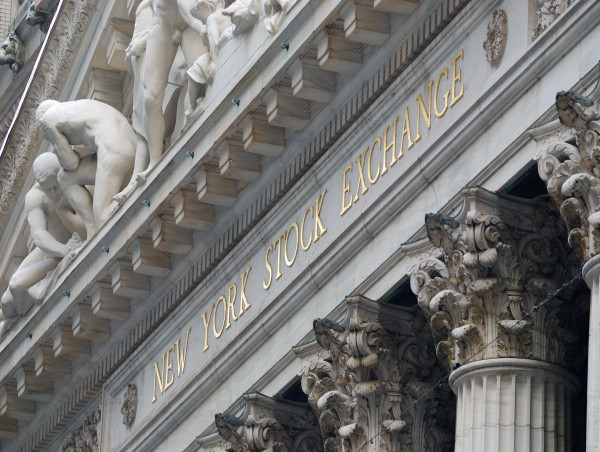Income-focused investors have flocked to covered call Exchange Traded Funds (ETFs) that promise higher distributions while limiting potential downside. These funds also promise to benefit from the rally in the stock market.
The most popular covered call ETFs are run by JPMorgan, which runs the popular Equity Premium Income ETF (JEPI) and Nasdaq Equity Premium Income Fund (JEPQ). These funds give investors access to more companies in the stock market. JEPQ tracks the Nasdaq 100 index while JEPI tracks many companies in the S&P 500 index.
Other covered call ETFs track individual companies. For example, the YieldMax TSLA Option Income Strategy ETF (TSLY), which has $805 million in assets tracks Tesla and yields 11%. The YieldMax NVDA Option Income Strategy ETF (NVDA) tracks Nvidia while CONY tracks Coinbase stock.
Boomer Candy ETFs pay a big yield
These covered call ETFs, which the Wall Street Journal called boomer candy funds are better seen as replacements for government bonds, which retirees love. These income-focused investors love covered call ETFs because of their substantial returns.
Instead of investing in 10-year government bonds and earn 5% yields, these investors buy covered call funds and earn double-digit yields. For example, TSLY and NVDY have a dividend yield of 72% and 64%, respectively.
The Global X Nasdaq 100 Covered Call ETF (QYLD), which has over $8 billion in assets, yields 11.50% while JEPI yields 7.2%.
As such, many retirees believe that these funds are better than other traditional dividend ETFs like the Schwab US Dividend Equity (SCHD) and Vanguard High Dividend Equity ETF (VYM) which yield 3.4% and 2.87%, respectively.
They are also prepared to pay a higher fee than other traditional funds. QYLD has an expense ratio of 0.61% while TSLY, NVDY, and CONY have a 1.01% ratio.
How covered call ETFs work
To understand whether these boomer candy ETFs are worth it, you need to know how they work.
Their basic concept is simple. These funds allocate most of their funds to the underlying asset. For example, TSLY and NVDY invest in synthetic assets that track Tesla and Nvidia shares. By doing this, they benefit from the overall gains of these companies.
The remaining part of the funds are invested in the options market. In this, the funds sell call options on the asset or an index. A call option is a financial derivative that gives a user the right but not the obligation to buy an asset.
For example, assume that a stock was trading at $10 and you have a call options trade. If it drops to $8, the call trade gets worthless since you can buy it in the open market. On the other hand, if the stock rises to $11, you benefit since you can buy it at $10.
This is a simple explanation of how the options part of the covered call funds work. One more thing is the options premium, which describes the price that an options buyer pays to the seller for the right to buy or sell at a pre-determined price. These ETFs use this premium to distribute it to the shareholders.
A covered call ETF generates a positive return when the underlying asset is rising and then limits the downside when it falls. However, since the options trade has a strike price, gains can be limited if the asset rises exponentially.
A good example of this is the NVDY ETF, which has had a total return of 112% this year while Nvidia has jumped by over 150%.
Are TSLY, JEPI, and QYLD good investments?
Most people who invest in covered call ETFs do so because of the potential return that is represented by the yield.
However, as I have written before, a higher yield does not make an asset a good investment. If this was the case, then Real Estate Investment Trusts (REITs) like Realty Income and Simon Property Group should beat the lower-yielding technology stocks.
A closer look at the total return of these funds shows that they underperform their benchmark assets. A total return is a figure that looks at the price and the dividends paid.

QYLD vs TSLA vs QYLD vs QQQ vs JEPI vs SPY 2024 performance
The chart above shows that the TSLY ETF has dropped by 2% while Tesla has risen by 0.30% this year. Similarly, the QYLD ETF has risen by 9.38% while the Invesco QQQ has risen by 17.4%. JEPI has jumped by 7.45% while the SPY ETF is up by 17%.
Therefore, for a long-term investor, I believe that it makes sense to invest in normal ETFs that track the S&P 500 and Dow Jones.

QYLD vs TSLA vs QYLD vs QQQ vs JEPI vs SPY 2023 performance
However, to some extent, these funds can be good alternatives to government bonds. In the chart above, we see that they were all positive in 2023, with TSLY, QYLD, and JEPI rising by 64%, 23%, and 10%. In that period, a $10,000 invested in 10-year treasuries brought in just $350.
The post Are covered call ETFs like QYLD, TSLY, and JEPI good for investors? appeared first on Invezz





